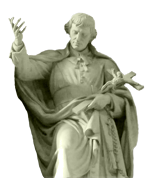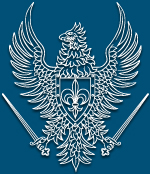Church
´To liberate the Mass of Saint Pius V is to condemn the II Vatican Council by means of a symbol`, said Pope Paul VI
Orlando Fedeli
On the eve of the liberation of the Mass of Saint Pius V all around the world, it is very convenient to cite what Paul VI thought about it. In Jean Guitton’s book, Paul VI Secret, Guitton tells that he has showed Paul VI a text with Propositions regarding the problems of Faith in France.
“Let us see these Propositions”, said the Pope. I gave him the document. There was a first paragraph about Faith, in which it was said that the major problem of out times was Faith, whether it is everlasting. Because Faith is just truthful if it is everlasting, that is, if the Faith of today is the same of the past, and of the future. The Pope said, “Progress supposes tradition. We always claimed this, solemnly, particularly in our creed.”
“The difficulty – I replied – comes from the fact the one talks about the council Church as if this Church would have darken everything which existed before. Now, if the council Church cancels and modifies in essential points the previous Church, she recognizes that she may have failed in the past. And if she has failed in the past, why is that it cannot fail today and in the future?”
“The Holy Father said me: ‘Let us consider the liturgical reform. I will go even farther. Not only we kept all the past, but we recovered the source of the most ancient tradition, the most primitive, closer to the origins. Now, this tradition had been darkened by the course of the centuries, mostly in the Council of Trent’”.
“I replied: It is hard not to unleash the feeling that Trent has abandoned or rejected what existed before Trent, for example, that the Trent Mass, there, where the Council insisted about the sacrificial character of the Mass (which mystically renews the sacrifice at the cross) was disguised by an anti-Lutheran reaction, in which Luther was more in accordance with truth than the Council, once Luther claimed to get back to the primitive source.”
“But – said the Pope – here it is not being questioned the identity of Faith, and its perennial truth. Vincent of Lérins’ rule, quod semper, quod ubique, quod ab omnibus (what was always believed, everywhere, and by everyone), the Faith criteria will remain forever”.
The Pope then read the third point of my document where it is said that it would be desirable the authorization of the Mass of Saint Pius V, through an experimental and provisory time span; consequently, the nullification of the interdict made in France as to celebrate the very Saint Pius V Mass (which the Council has never intended to abolish).
The pope says harshly:
“This I will never do! Since it is a bad dispute, once I have kept the Cannon of Saint Pius V in the new liturgy, where it is placed at the first place”.
[Guitton:]“But this is not about the cannon. It is about the Offertory where, in the new liturgy, the idea of sacrifice seems restricted.”
[Paulo VI]: “I recognize that the difference between Saint Pius V liturgy, and the Council liturgy (often called, I don’t know why, Paul VI Liturgy) is very small. Regarding the appearance, the diversity [of the offertory of the two masses] lays on a subtlety. But this Mass of Saint Pius V, as we see in Ecône, has become the symbol of the Council’s condemnation. Now, we will never accept, under any circumstances, that one condemns the Council by means of a symbol”. [the highlight is ours].
“If we accepted this exception, the whole Council would dare to hesitate, and, consequently, so would the Council Apostolic authority.” (Jean Guitton, Paulo VI Secreto, editora San Paolo, Milano, 4th edition, 2002, integral version from French entrusted to David M. Turoldo and Francesco M. Geremia, pp. 143-145 – Original Title: Paul VI Secret, Desclée de Brouwer, Paris).
And that the Mass of Paul VI is the means through which the faithful people most know the Council, and that this Mass is the expression of the Vatican II, that was stated by John Paul II and by the Episcopal Synod in 1985:
”The liturgical renewal is the most visible fruit of whole work of the Council.’(Synodi Extr. Episc. 1985 «Relatio finalis», II, B, b. 1). For many people the message of the Second Vatican Council has been experienced principally through the liturgical reform.” (John Paul II, Apostolic Letter Vicesimus Quintus Annus, on the twenty-fiftieth anniversary of the promulgation of the council constitution Sacrosanctum Concilium on the Sacred Liturgy, December 4th, 1988, n. 12, underlined ours,http://www.vatican.va/holy_father/john_paul_ii/apost_letters/documents/hf_jp-ii_apl_04121988_vicesimus-quintus-annus_en.html).
These texts of Paul VI speak by their own…
Let us highlight three most serious points in these affirmations by Paul VI:
1 – The unbelievable claiming that the “tradition [of the Church] had been darkened by the course of the centuries, mostly in the Council of Trent’”
The Council of Trent was infallible!
How could Paul VI dare to accuse an infallible Council of having darkened Church’s Tradition?
2 – “It is about the Offertory where, in the new liturgy, the idea of sacrifice seems restricted”, said Guitton, for whom Paul VI replied:
“I recognize that the difference between Saint Pius V liturgy, and the Council liturgy (often called, I don’t know why, Paul VI Liturgy) is very small. Regarding the appearance, the diversity [of the offertory of the two masses] lays on a subtlety”.
Through these words, Paul VI recognized that one of the fundamental divergent points between the Everlasting Mass and the New Mass, which he imposed against all Church tradition, is in the Offertory.
He admits that in his New mass the sacrificial idea seems restricted, diminished, but that the diversity lays only on a subtlety.
Which is another most serious confession, for it brings the New Mass closer to the Lutheran notion of supper.
3 – The categorical claiming that to liberate the Everlasting Mass is, symbolically, to condemn the II Vatican Council, once, as John Paul II said: “For many people the message of the Second Vatican Council has been experienced principally through the liturgical reform”.
I repeat Paul VI’s phrase:
“This [liberating the Mass of Saint Pius V] I will never do! (…) This Mass of Saint Pius V, as we see in Ecône, has become the symbol of the Council’s condemnation. Now, we will never accept, under any circumstances, that one condemns the Council by means of a symbol”.
In fact, what the people recognize nowadays as the symbol of the Vatican II is the New Mass of Paul VI.
Therefore, liberating the Mass is understood as a condemnation of the Vatican II.
And this is what several French Bishops proclaimed recently.
Don Jean-Pierre Longeat, O.S.B., Abbot of Ligugé, in a very recent article titled “The Roman Liturgy Unity Questioned”, published on 10/23/06 in the LA CROIX newspaper, showed that the basic issue is the opposition between the Everlasting Mass sacrificial notion, which mystically renews the sacrifice at the Cross, made by the priest acting in persona Christi, by allowing the transubstantiation of the bread and the wine into the Body and Blood of Christ, while this is contradicted in the New Mass of Paul VI, supported by Vatican II Constitution Lumen Gentium which understand the Mass as the sacerdotal action in the name of the people of God, in which the priests “act as ministers of the ecclesial community (in persona Ecclesiae, ministers of the Head and the Body)”. (cf.http://qien. free.fr/2006/ 200610/20061023_ longeat.htm).
Therefore, the New Mass expresses a new theology, different from the theology of Trent. The New Mass is the expression of the democratic and anthropocentric theology of the Vatican II Constitution Lumen Gentium. Due to this, to allow the Everlasting Mass is to abandon the Vatican II theology, as Paul VI roundly affirmed, it stands for a symbolical condemnation of the Council.
Here the words of Abbot Ligugé, revolted with the news that Bendict XVI would liberate the Mass of Saint Pius V all around the world.
“To intend to foster the Latin Church the return to another theological accent by extention of the 1962 Ordo, is to create a really deep disturbance in the people of God”.
To Abbot Ligugé:
“The Liturgy is a theological place. The 1968 Ordo Missae [that of the Mass of Paul VI] puts in motion particularly the theology of the dogmatic constitution of the Church. Lumen Gentium presents a Church at the same time as Mystic Body of Christ and as people of God reunited in Christ’s name; therefore, the Council says that the Church is “like a sacrament or as a sign and instrument both of a very closely knit union with God and of the unity of the whole human race.”(Lumen Gentium, n0 1)
“Before the danger of the individualism tied to the evolution of mentalities through several centuries, the Vatican II and the liturgical reform which came from it insist on the ecclesial reunion as a global sacrament. Such.sacrament is developed in the liturgy, but also regarding the fraternal community inside the ecclesiastic communities and among them. The community is per excellence the people of God reunited in the local Church around its Bishop, each member having his place in this sole Eucharistic, in close communion with everyone: assembly, presbyterium (where one understand well, from this perspective, that the concelebration would be fostered), deacons and other ministers”.
“The theological priority of the Council of Trentwas another (although the ecclesial aspect was present there): to value the reality of Christ’s presence in the bread and in the wine eucharisticazed and the sacramental role of the priest, against the protestant reform. This is why the priest sacred action is so valorized there. The words he pronounces in persona Christi allow the transubstantiation of the bread and the wine into the Body and Blood of Christ. Right, in the 1969 ritual, the ministers keep an essential role in this field, but the insistence is placed also over the fact that they act as ministers of the ecclesial community (in persona Ecclesiae, ministers of the Head and of the Body)”.
Summarizing, Paul VI’s great statement was:
“This [liberating the Mass of Saint Pius V] I will never do! (…) This Mass of Saint Pius V, as we see in Ecône, has become the symbol of the Council’s condemnation. Now, we will never accept, under any circumstances, that one condemns the Council by means of a symbol”.
The liberation of the Everlasting Mass is, in fact, at least symbolically, a condemnation of the Second Vatican Council.
And Benedict XVI will soon liberate the Everlasting Mass.
Therefore...
São Paulo, October 24, 2006
Orlando Fedeli
Para citar este texto:
"´To liberate the Mass of Saint Pius V is to condemn the II Vatican Council by means of a symbol`, said Pope Paul VI"
MONTFORT Associação Cultural
http://www.montfort.org.br/eng/veritas/igreja/missa_concilio/
Online, 17/12/2025 às 02:51:20h








